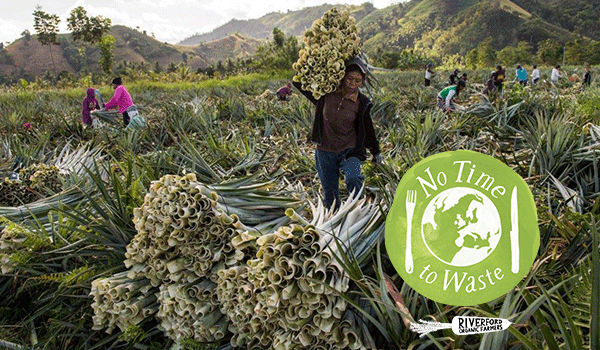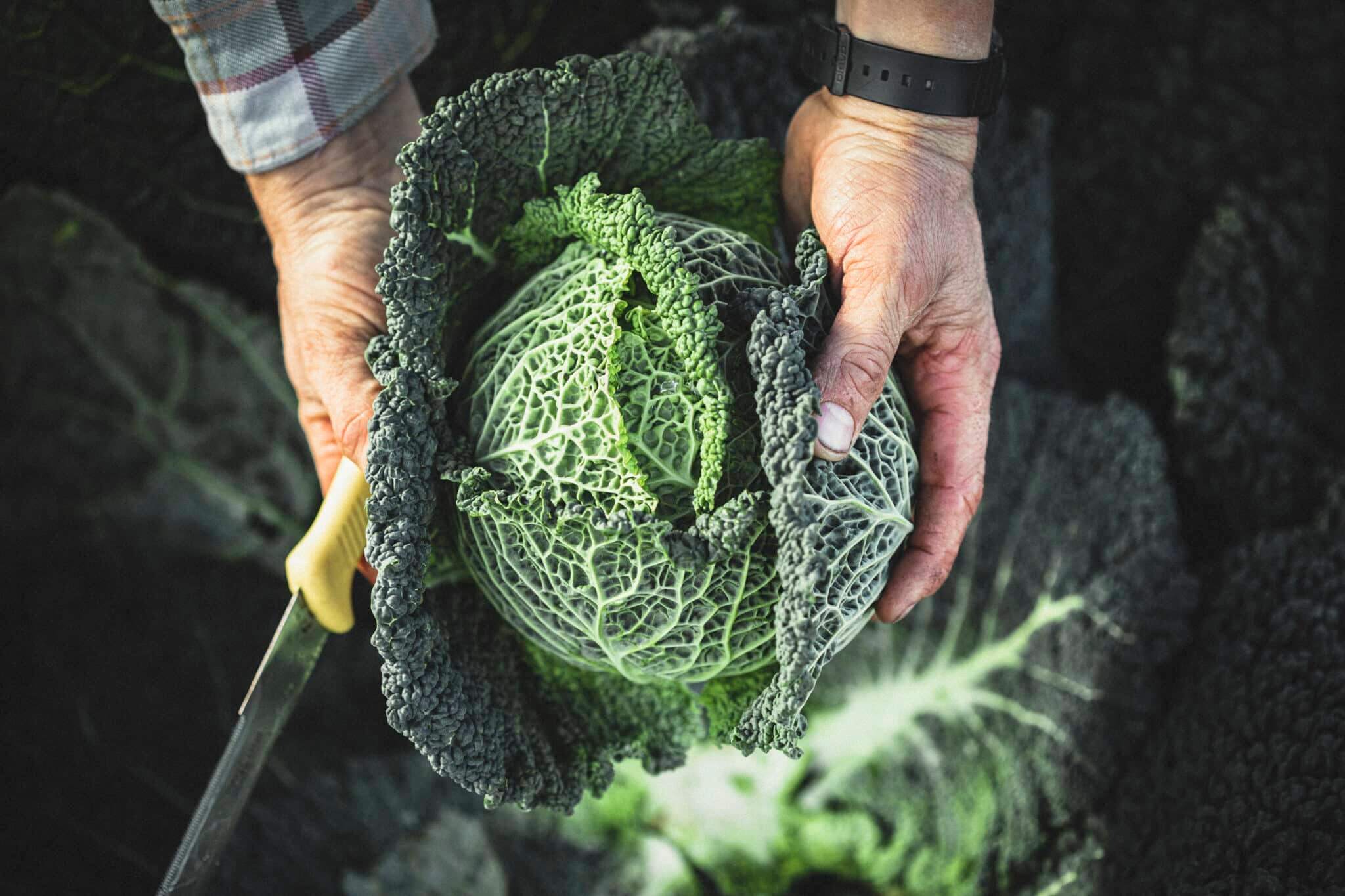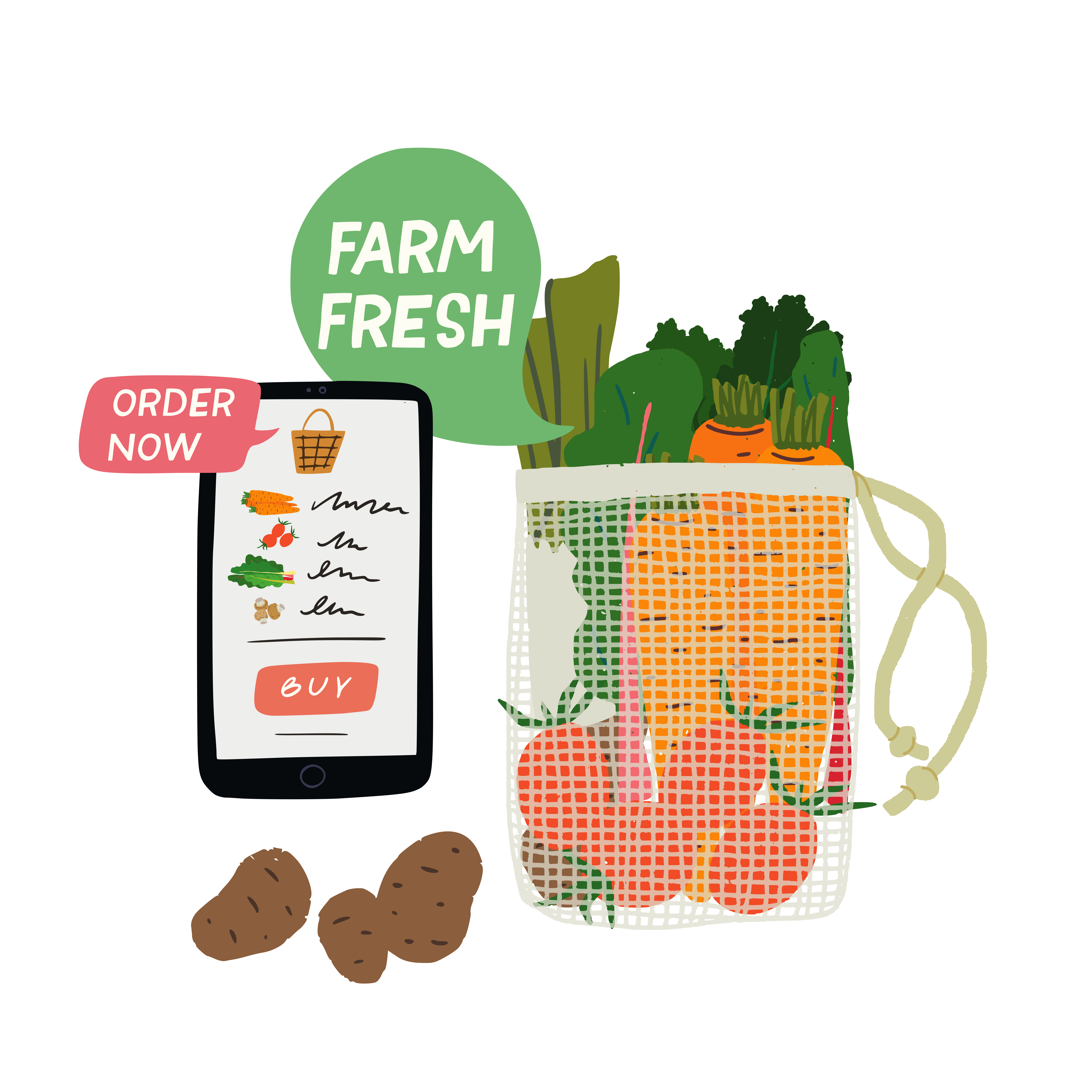When we think about food waste, it is natural to focus on what we directly consume – but not what happens further back in the chain. If we purchase a bottle of juice, some of the fruit is used for the juice but the rest might be wasted. What if it could be used as a resource?
Businesses are now developing innovative ways to do just this, with the sustainable fashion and beauty industries leading the way. Your breakfast juice could also be part of the cycle that makes your new Citrus Silk dress, as vegan ‘silk’ fabric can now be made of cellulose produced from orange peel.
In the search for leather alternatives, fruit is also an unlikely component of the flexible, breathable lookalikes just starting to be seen in online collections.

Sustainable footwear folks POZU use a trademarked Frumat Apple Skin Leather; a byproduct from apples grown organically in the Italian Alps for juicing. The leftovers after pressing are dried, powdered, mixed with pigments and binders, then spread onto a canvas base. This supple material then ends its long journey from the tree as a pair of trainers.
Your ‘leather’ jacket could now be sewn from a material that looks like hide but is made from pineapple leaves. The pineapple-growing industry produces around 40,000 tonnes of leaf waste every year, and by using these existing resources this innovative material requires no additional land, water, pesticides, or fertilisers for the leaf fibres.

Similarly, clothing company Pangaia’s Vegea grape leather repurposes grape skins, pulp and stems from Italian winemaking processes to make a composite, biobased material. But it’s worth knowing the full picture as there are also downsides to these new materials.
A common component of all these leather alternatives are binding agents like polyurethane (PU) which means they won’t biodegrade and are hard to recycle. Most vegan leathers are PVC-based, which is made entirely from fossil fuels, but the newer vegetable oil and water-based polyurethane (PUD) used in Vegea grape leather are a step forward, vastly reducing fossil fuel inputs.
Alternatives that are not only made from waste but are biodegradable should be what we work towards. Banana plant stems, for example, have emerged as amazing resource which can be made into strong, durable, silken fibres. More than 100 billion bananas are consumed globally each year, generating an estimated 270 million tonnes of peel and stalks, which are usually burned or sent to landfill. This either causes air pollution or releasing methane into the atmosphere, both of which contribute to global warming.

Last year, Wicked Leeks reported on a new range of jeans by ethical denim company Hiut Denim made using banana stems, and another innovative use has emerged in 2021 from newly launched US hair braid company Rebundle. Most faux hair is made from acrylic coated plastic that can irritate the scalp upon contact and usually ends up in landfill, but Rebundle’s ‘braid better’ uses specially treated banana fibres that are non-toxic and itch-free.
Founder Ciara Imani May’s mission is creating space for black women in ‘clean’ beauty where alternatives don’t exist, and after suffering from a bad reaction to synthetic hair extensions herself created the plant-based hair extensions to solve this. Eco-friendly, comfortable, and even biodegradable – after use they can just be composted.
This kind of innovative approach is so needed right now. Broadening our focus from cotton, leather and plastics to a wider variety of less ‘water hungry’ plants and polluting processes is a positive and essential shift environmentally. The use of plant fibres is as old as humankind and rediscovering them could add value to farmers’ harvests while lessening their carbon footprint.
So called Biofibres are seen by some as a new ‘bio industrial revolution’ – these new biobased materials not only close the loop to prevent food waste but may form the basis of what we wear in years to come.













This is good news for the future. Especially if we try and keep it local too – use the plant waste/leftovers in our own countries not make them travel huge distances causing more pollution….! Also there is the point that much plant ‘waste’ should be – if not already – be used to put humus back into our depleted soils. Often the ‘waste’ positted is only because the system used is one adding vast amounts of chemical fertilisers with all the problems that causes…. so we need to carefully think what is actual waste and what should be returned to the soil…..
Also – lets minimise what we buy new anyhow – do we really need ‘new’ clothes? I rarely buy anything new – there are so many ways of getting second-hand clothes that the ‘picky’ fashion-conscious seem to tire of so easily and quickly….
But as another way to produce products humans deem necessary – without the huge chemical/water/energy input of cotton – tis a good idea!!
Aye would be much easier if we could just use second hand products – I agree that we already have much more than we need, – but that sort of attitude doesn’t sit well with the notion of profitability. How do we make recycling and repurposing clothes fashionable?
However, I do like how circular supply chains are becoming, however should we be wary of becoming circular for the sake of selling a new product and not take into account like you say – putting organic matter back into the soil. Trade offs and an unintended consequences hiding around every corner.
My issue with this is that it relies on a highly intensive monoculture and cash crop system. One that feeds into our extractive, globalised food systems, where we demand 100 bn bananas every year. Is it really the waste that is the problem or the system itself? The concept is cool and really innovative, but it seems a little like putting a plaster over a gaping crack.
Innovation for innovations sake doesn’t really strike me as innovation at all. But equally- should we still be encouraging these projects – a little like renewable energy 20 years ago, when it was nowhere near the efficiency of gas and oil. But now after continuous investment and improvement it’s getting to the point where it’s as efficient, and none of the emissions. Maybe 10 years down the line, this material could replace plastic who knows – I certainly don’t…
Hi Becky
I have friends who run a small farm in India. They usually plant wheat pomegranate and cotton.
Your article looks really interesting. Have you any ideas how I can help my friends consider different ways of farming. Any links reading materials would be so helpful. I will send them your article which I am sure they will find interesting.
Hi Penny, the fibres mentioned in this article were researched and developed by the companies themselves, so unfortunately I don’t have anywhere I could direct your friends to. I would suggest they look for co-operatives in their area which would be a good way to connect with other small-scale producers and help develop what they do. Very best wishes, Becky